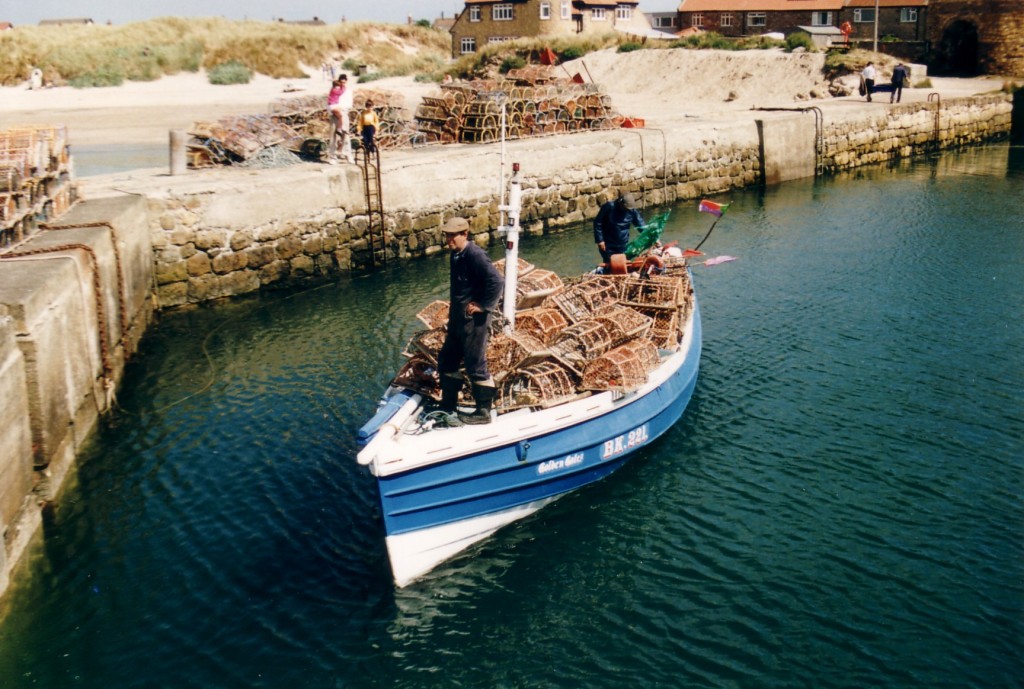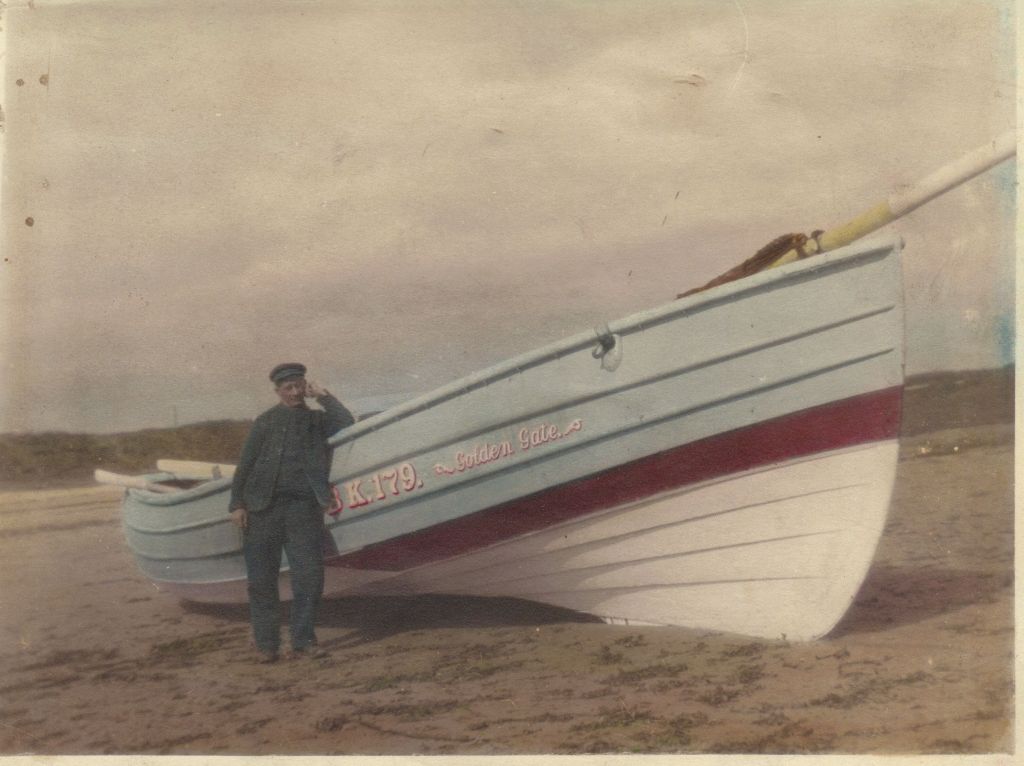THE ESSAY
BBC Radio 3, week beginning January 29th 2024
10.45pm
A Circumnavigation of the British Isles in Five Traditional Boats
Produced by Julian May.
Every night this week, The Essay will feature a different writer, considering a traditional wooden boat from their part of the British Isles.
John Ruskin said the bow of a wooden boat is ‘the pinnacle of Man’s achievement’. He appreciated that some of our most beautiful and effective creations are not designed as such but evolve to fulfil their task in their place, according to the history and affections of the people who use them. Some are scarcely noticed – overlooked because historians tend to concentrate on the built environment rather than on more ephemeral structures like boats, built to do jobs. In this series of The Essay five writers, each personally involved with their craft, circumnavigate the British Isles in five traditional boats – without leaving home.
They include:
The Cornish and Isles of Scilly Pilot Gig (Anna Maria Murphy, 29.1.1.24)
The Irish Curach (Keith Payne, 30.1.24)
Shetland Whillies, Yoals and Sixerns (Brian Wishart, 31.1.24)
The Coble (Katrina Porteous, 1.2.24)
The Essex Smack (Malcolm ‘Mac’ MacGregor, 2.2.24)
All five essays will be available after broadcast on BBC Sounds, HERE.
My essay on the Coble, Thursday 1st February, features a trip I made from Beadnell on the Douglases’ Golden Gate II in the mid 1990s. The poem excerpts are from my dialect poem, The Wund an’ the Wetter, with Northumbrian pipe music by Chris Ormston. An excerpt from The Wund an’ the Wetter is available HERE.
The full poem is available on the eBook version of Two Countries with audio, HERE.
The Coble ‘Golden Gate’ leaves Beadnell Harbour, 1993 (photo K.Porteous)
You can read more on my work with the Northumbrian coble fishing community in North East History vol 37 (2006) pp68-87 HERE
and in my book The Bonny Fisher Lad (2003) HERE.
For more information about Northumbrian and Yorkshire Cobles and the maritime history of NE England, please visit the Coble and Keelboat Society, HERE.
Ancestors
On a personal note, I’ve often wondered where my lifelong fascination with coble fishing originated. I don’t have any immediate family links. My grandfather on my mother’s side was a Durham pitman and on my father’s a Newcastle G.P.
Thanks to a relative’s family research, however, I recently discovered that my Mother’s Great Great Grandfather was Launcelot Burn, a well-known pilot on the River Tyne. He, alongside others, would have used his coble to guide shipping into the river. He was also Coxswain of the Tyne lifeboat, Providence and, together with 19 crew, lost his life in an infamous disaster in 1849 when Providence capsized during a rescue. He left a widow and two children, one of whom, Martha, was my Great Great Grandmother. It is interesting to reflect on research which shows that trauma can leave a chemical (‘epigenetic’) mark on a person’s genes, which can be passed down to future generations.
Here’s picture of me with the painting The Wreck off the South Pier by John Scott in South Shields Museum, showing the lifeboat Providence, which continued to serve after 1849. Chairman of the Coble and Keelboat Society, David Sells, who took the photo, gave us a guided tour of the Museum at the last Society AGM.
The Last Fishermen
Tuesday February 13th 2024
Belford Community Cinema presents:
THE LAST FISHERMEN
The End of the Line for An Ancient Maritime Tradition
With speaker Katrina Porteous
UPSTAIRS at Bell View, 33 West Street, Belford NE70 7QB
Doors 6.30pm/7pm start.
Running Time 56mins + Q and A. Tickets: £4 on the Door.
A century ago every port on the coast of North East had its own fleet of cobles. Fishermen braved stormy seas to bring back the daily catch in these tiny wooden boats, whose design goes back hundreds of years. But now more cobles are being destroyed than are being built, and a unique way of life has all but vanished.
Charles Bowden’s film ‘The Last Fishermen’ (made in 2003) tells the story of the coble and features the handful of men who were still using the boat for fishing at that time. At Boulmer, Main Stephenson’s Northern Pride was one of just three still based at the village. In summer he cast his nets close to the beach, hoping to catch sea trout in the way his forefathers did. In winter he went potting for lobsters and crabs. The decline in coble fishing had hit boat-building too, but in a small shed in Whitby master boat-builders were making the first to be built on the coast for 15 years. It was perhaps one of the last.
I’ll introduce Charles Bowden’s film, which includes the bonus short, ‘Sea of Stories’, featuring my own film shot in Beadnell in the 1990s. There will be a discussion after the film, and we hope to give a glimpse of a world that has almost disappeared forever.
Catch a taster of Main Stephenson in ‘The Last Fishermen’ HERE.
You can still buy copies of Charles Bowden’s ‘The Last Fishermen’ (inc. ‘Sea of Stories’ with my film) on DVD HERE.
The earlier Golden Gate, with John Percy Douglas, c1920
(photo: Catherine Petty)
Salmon netting from cobles on the Northumberland coast, as shown in The Last Fishermen, has now been banned. You can read about that in my essay, Naen Skyells, in Wild Fish 2021, HERE.
You might also enjoy my poem Plenty Lang a Winter, near the end of this short film by GRUB productions for Food and Drink North East, HERE.
Lastly, I’m wishing a very Happy New Year to everyone who has found their way to this site.




What an astonishing compilation of work commemorating, immortalising the fishing communities of this north-east coast. Katrina produces a unique synthesis of expert history and evocative, highly personal poetry (and indeed photography) – wonderful, thank you!!
LikeLike